Asst. Prof. Dr. Ayşe pekrio ğlu Balkıs. Soil

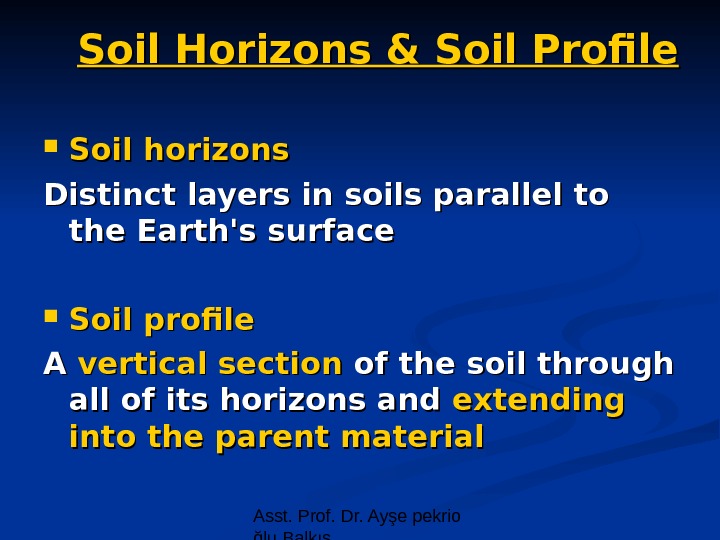
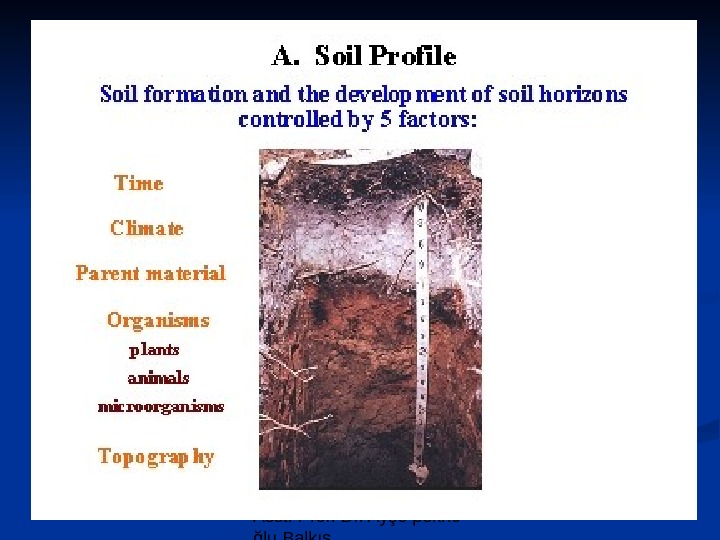
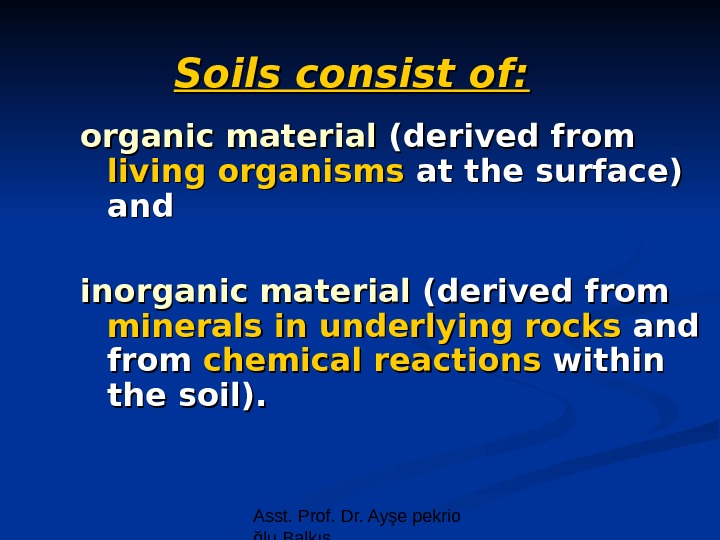
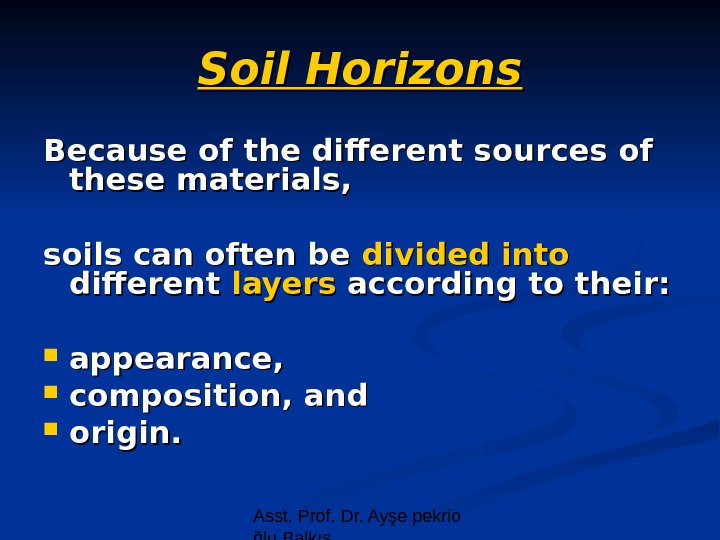
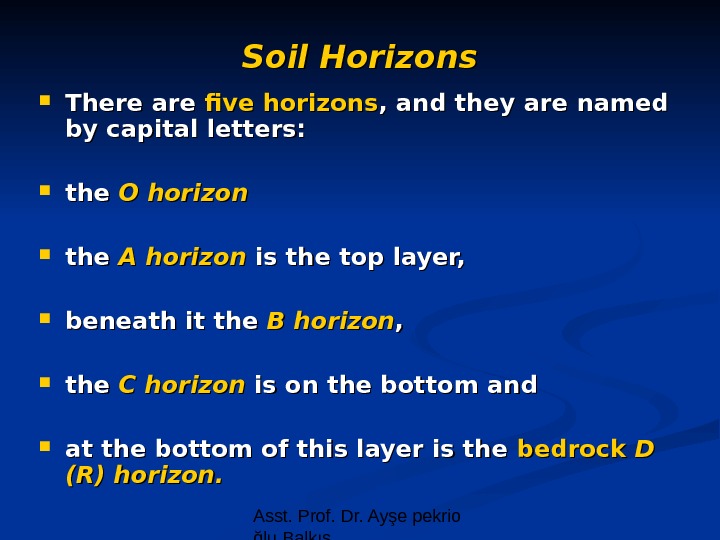
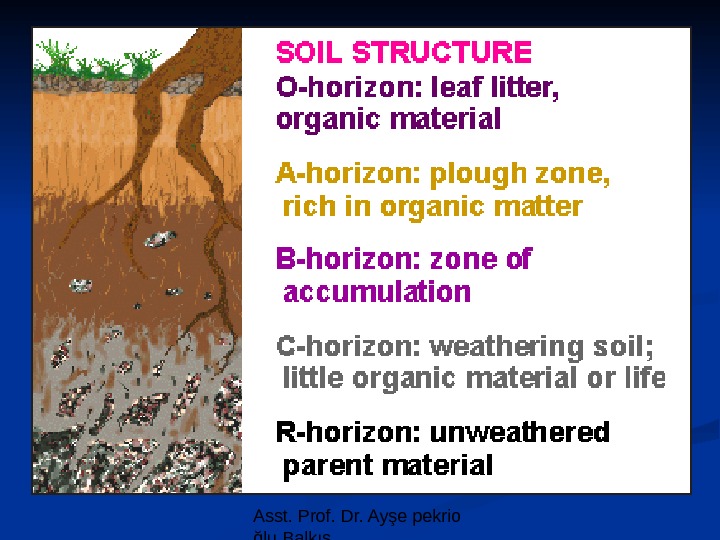
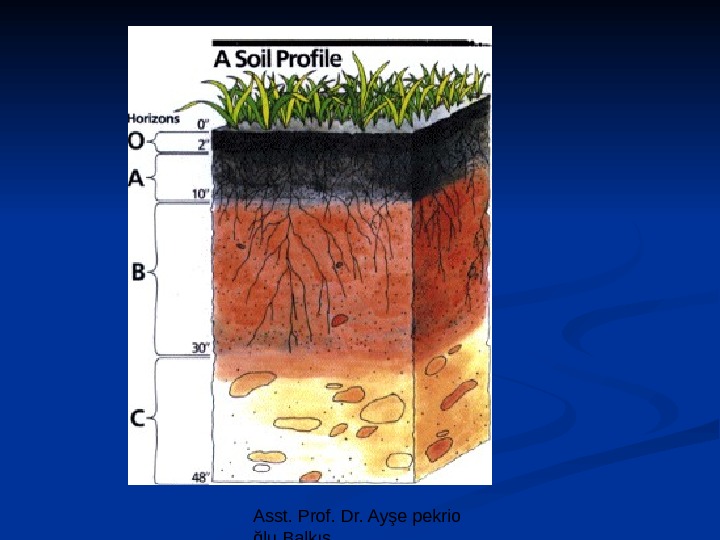
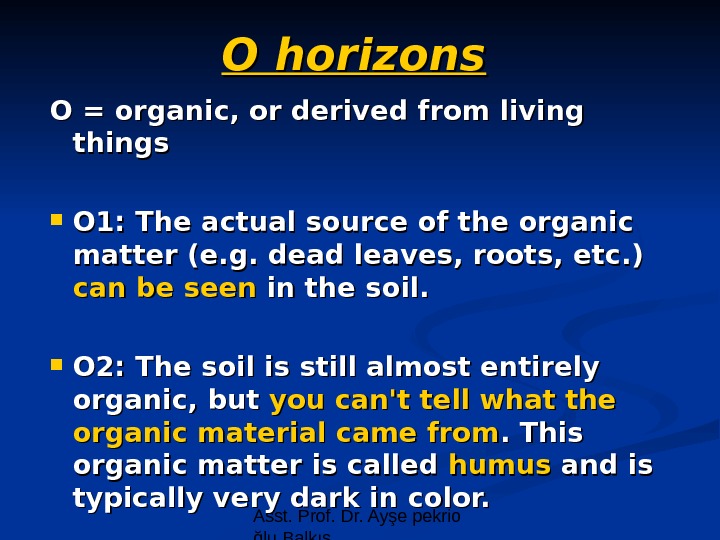
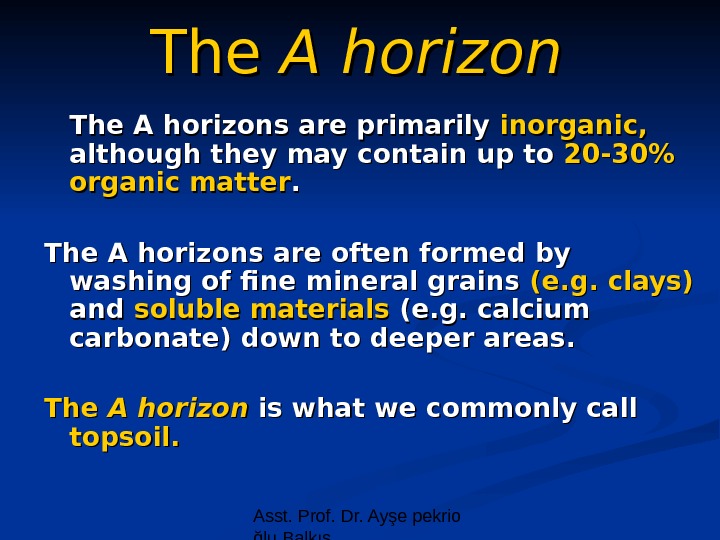
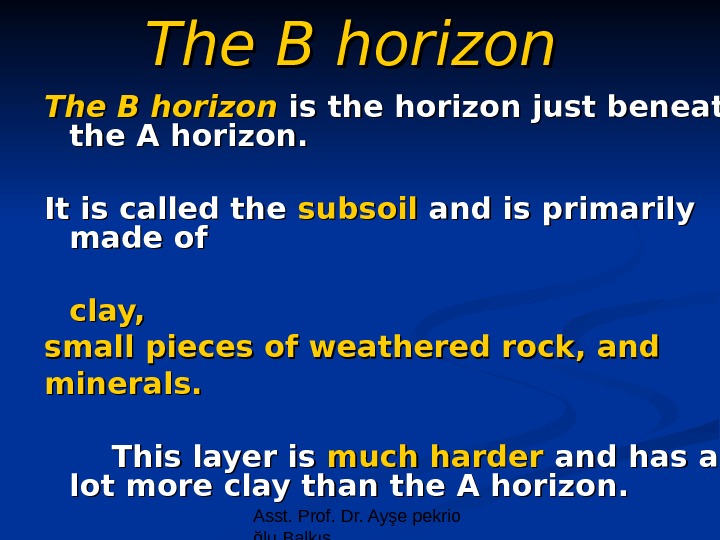
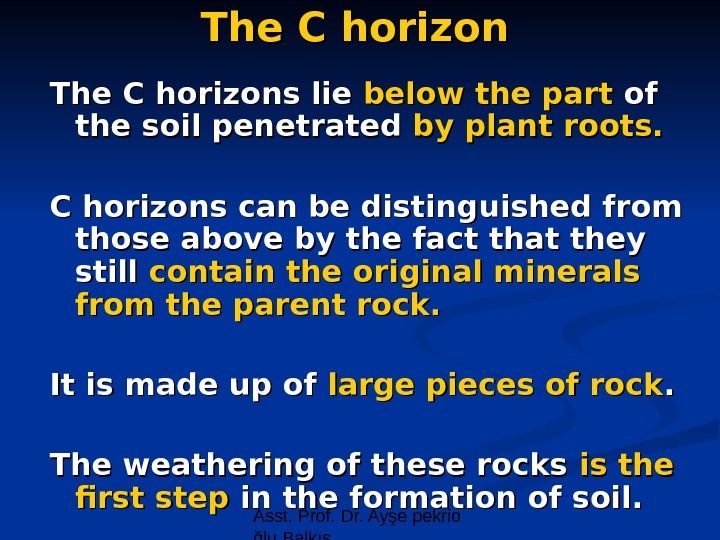
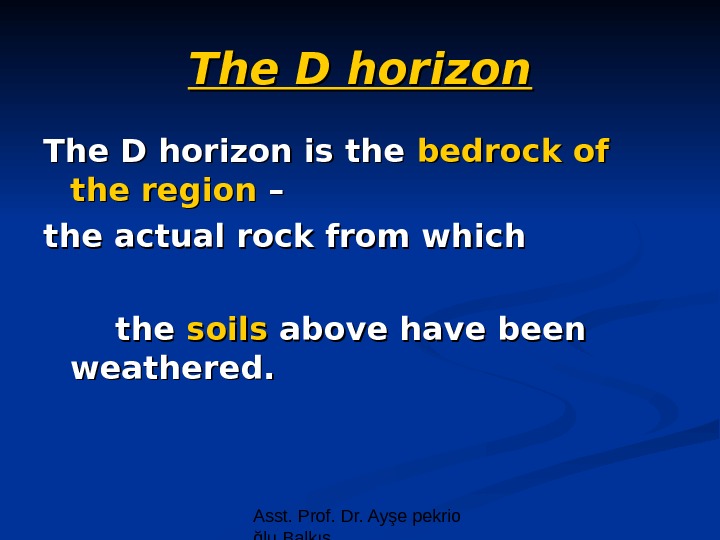
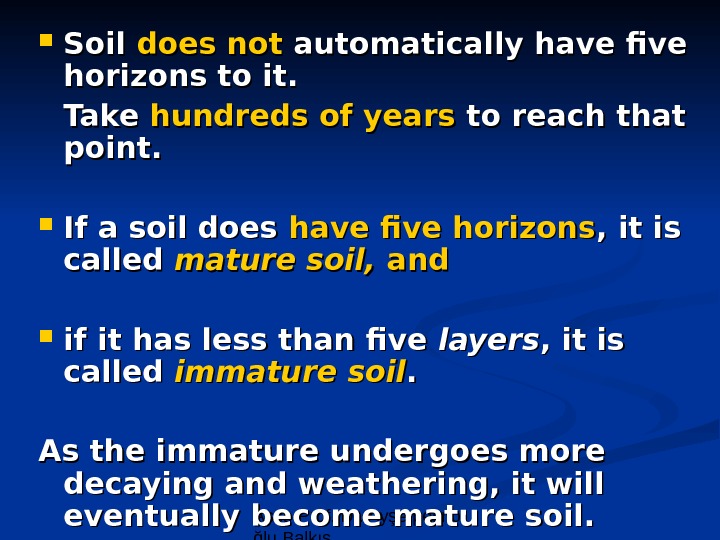
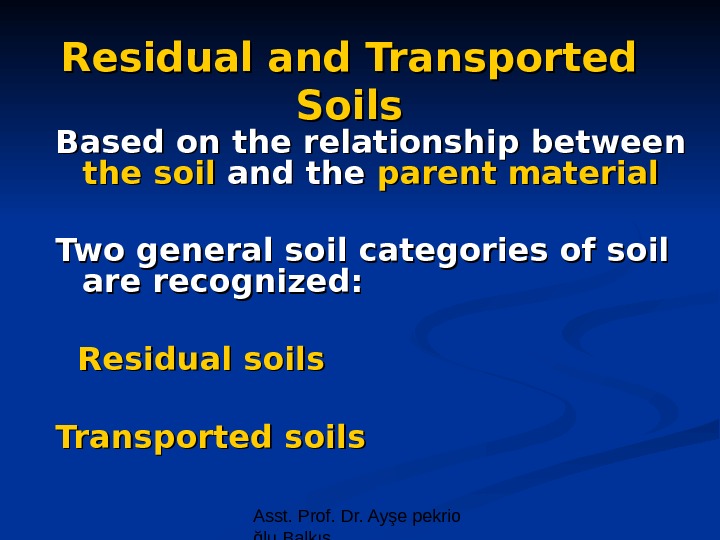
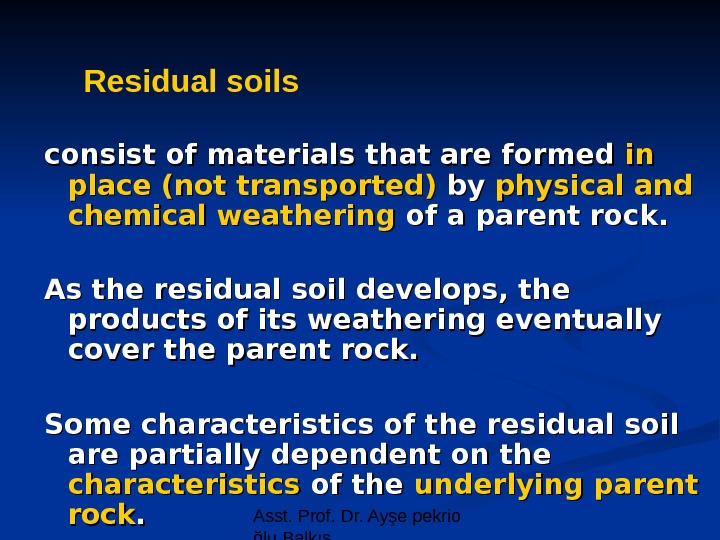
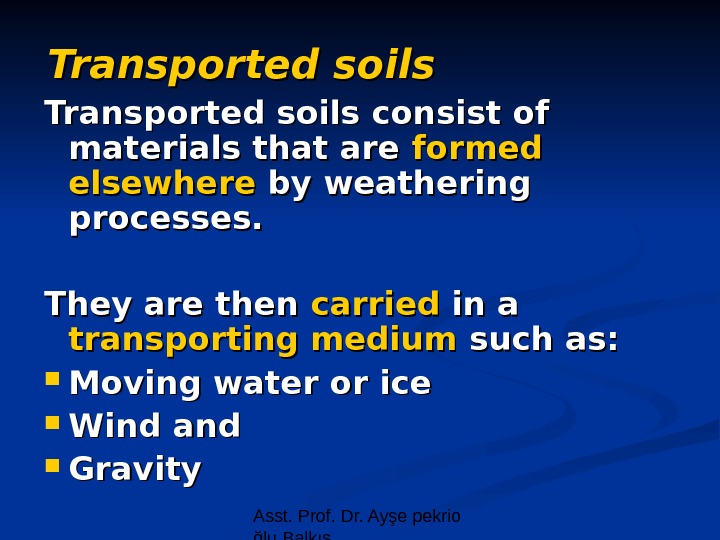
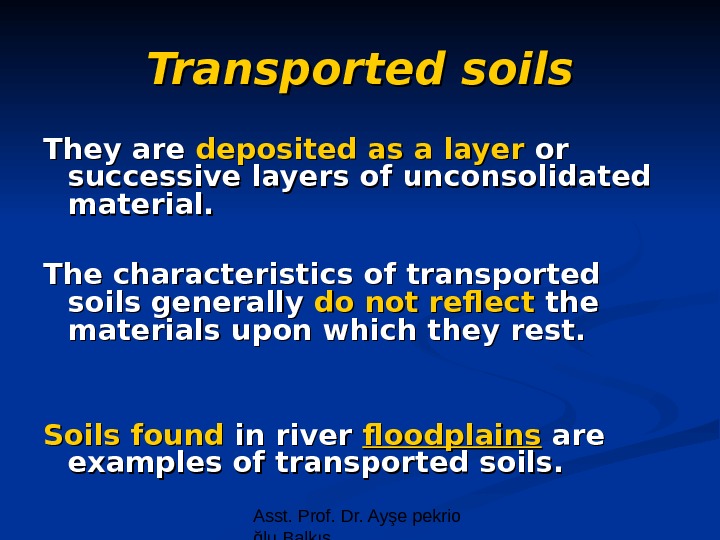
- Размер: 207.5 Кб
- Количество слайдов: 17
Описание презентации Asst. Prof. Dr. Ayşe pekrio ğlu Balkıs. Soil по слайдам
 Asst. Prof. Dr. Ayşe pekrio ğlu Balkıs. Soil Horizons & Soil Profile Soil horizons Distinct layers in soils parallel to the Earth’s surface Soil profile A A vertical section of the soil through all of its horizons and extending into the parent material
Asst. Prof. Dr. Ayşe pekrio ğlu Balkıs. Soil Horizons & Soil Profile Soil horizons Distinct layers in soils parallel to the Earth’s surface Soil profile A A vertical section of the soil through all of its horizons and extending into the parent material
 Asst. Prof. Dr. Ayşe pekrio ğlu Balkıs
Asst. Prof. Dr. Ayşe pekrio ğlu Balkıs
 Asst. Prof. Dr. Ayşe pekrio ğlu Balkıs. Soils consist of: organic material (derived from living organisms at the surface) and inorganic material (derived from minerals in underlying rocks and from chemical reactions within the soil).
Asst. Prof. Dr. Ayşe pekrio ğlu Balkıs. Soils consist of: organic material (derived from living organisms at the surface) and inorganic material (derived from minerals in underlying rocks and from chemical reactions within the soil).
 Asst. Prof. Dr. Ayşe pekrio ğlu Balkıs. Soil Horizons Because of the different sources of these materials, soils can often be divided into different layers according to their: appearance, composition, and origin.
Asst. Prof. Dr. Ayşe pekrio ğlu Balkıs. Soil Horizons Because of the different sources of these materials, soils can often be divided into different layers according to their: appearance, composition, and origin.
 Asst. Prof. Dr. Ayşe pekrio ğlu Balkıs. Soil Horizons There are five horizons , and they are named by capital letters: the O horizon the A horizon is the top layer, beneath it the B horizon , , the C horizon is on the bottom and at the bottom of this layer is the bedrock D D (R) horizon.
Asst. Prof. Dr. Ayşe pekrio ğlu Balkıs. Soil Horizons There are five horizons , and they are named by capital letters: the O horizon the A horizon is the top layer, beneath it the B horizon , , the C horizon is on the bottom and at the bottom of this layer is the bedrock D D (R) horizon.
 Asst. Prof. Dr. Ayşe pekrio ğlu Balkıs
Asst. Prof. Dr. Ayşe pekrio ğlu Balkıs
 Asst. Prof. Dr. Ayşe pekrio ğlu Balkıs
Asst. Prof. Dr. Ayşe pekrio ğlu Balkıs
 Asst. Prof. Dr. Ayşe pekrio ğlu Balkıs. O horizons O = organic, or derived from living things O 1: The actual source of the organic matter (e. g. dead leaves, roots, etc. ) can be seen in the soil. O 2: The soil is still almost entirely organic, but you can’t tell what the organic material came from. This organic matter is called humus and is typically very dark in color.
Asst. Prof. Dr. Ayşe pekrio ğlu Balkıs. O horizons O = organic, or derived from living things O 1: The actual source of the organic matter (e. g. dead leaves, roots, etc. ) can be seen in the soil. O 2: The soil is still almost entirely organic, but you can’t tell what the organic material came from. This organic matter is called humus and is typically very dark in color.
 Asst. Prof. Dr. Ayşe pekrio ğlu Balkıs. The A horizons are primarily inorganic, although they may contain up to 20 -30% organic matter. . The A horizons are often formed by washing of fine mineral grains (e. g. clays) and soluble materials (e. g. calcium carbonate) down to deeper areas. The A horizon is what we commonly call topsoil. The A horizon
Asst. Prof. Dr. Ayşe pekrio ğlu Balkıs. The A horizons are primarily inorganic, although they may contain up to 20 -30% organic matter. . The A horizons are often formed by washing of fine mineral grains (e. g. clays) and soluble materials (e. g. calcium carbonate) down to deeper areas. The A horizon is what we commonly call topsoil. The A horizon
 Asst. Prof. Dr. Ayşe pekrio ğlu Balkıs. The B horizon is the horizon just beneath the A horizon. It is called the subsoil and is primarily made of clay, small pieces of weathered rock, and minerals. This layer is much harder and has a lot more clay than the A horizon.
Asst. Prof. Dr. Ayşe pekrio ğlu Balkıs. The B horizon is the horizon just beneath the A horizon. It is called the subsoil and is primarily made of clay, small pieces of weathered rock, and minerals. This layer is much harder and has a lot more clay than the A horizon.
 Asst. Prof. Dr. Ayşe pekrio ğlu Balkıs. The C horizons lie below the part of of the soil penetrated by plant roots. C horizons can be distinguished from those above by the fact that they still contain the original minerals from the parent rock. It is made up of large pieces of rock. . The weathering of these rocks is the first step in the formation of soil. The C horizon
Asst. Prof. Dr. Ayşe pekrio ğlu Balkıs. The C horizons lie below the part of of the soil penetrated by plant roots. C horizons can be distinguished from those above by the fact that they still contain the original minerals from the parent rock. It is made up of large pieces of rock. . The weathering of these rocks is the first step in the formation of soil. The C horizon
 Asst. Prof. Dr. Ayşe pekrio ğlu Balkıs. The D horizon is the bedrock of the region – – the actual rock from which the soils above have been weathered.
Asst. Prof. Dr. Ayşe pekrio ğlu Balkıs. The D horizon is the bedrock of the region – – the actual rock from which the soils above have been weathered.
 Asst. Prof. Dr. Ayşe pekrio ğlu Balkıs Soil does not automatically have five horizons to it. Take hundreds of years to reach that point. If a soil does have five horizons , it is called mature soil, and if it has less than five layers , it is called immature soil. . As the immature undergoes more decaying and weathering, it will eventually become mature soil.
Asst. Prof. Dr. Ayşe pekrio ğlu Balkıs Soil does not automatically have five horizons to it. Take hundreds of years to reach that point. If a soil does have five horizons , it is called mature soil, and if it has less than five layers , it is called immature soil. . As the immature undergoes more decaying and weathering, it will eventually become mature soil.
 Asst. Prof. Dr. Ayşe pekrio ğlu Balkıs. Residual and Transported Soils Based on the relationship between the soil and the parent material Two general soil categories of soil are recognized: Residual soils Transported soils
Asst. Prof. Dr. Ayşe pekrio ğlu Balkıs. Residual and Transported Soils Based on the relationship between the soil and the parent material Two general soil categories of soil are recognized: Residual soils Transported soils
 Asst. Prof. Dr. Ayşe pekrio ğlu Balkısconsist of materials that are formed in in place (not transported) by by physical and chemical weathering of a parent rock. As the residual soil develops, the products of its weathering eventually cover the parent rock. Some characteristics of the residual soil are partially dependent on the characteristics of the underlying parent rock. . Residual soils
Asst. Prof. Dr. Ayşe pekrio ğlu Balkısconsist of materials that are formed in in place (not transported) by by physical and chemical weathering of a parent rock. As the residual soil develops, the products of its weathering eventually cover the parent rock. Some characteristics of the residual soil are partially dependent on the characteristics of the underlying parent rock. . Residual soils
 Asst. Prof. Dr. Ayşe pekrio ğlu Balkıs. Transported soils consist of materials that are formed elsewhere by weathering processes. They are then carried in a transporting medium such as: Moving water or ice Wind and Gravity
Asst. Prof. Dr. Ayşe pekrio ğlu Balkıs. Transported soils consist of materials that are formed elsewhere by weathering processes. They are then carried in a transporting medium such as: Moving water or ice Wind and Gravity
 Asst. Prof. Dr. Ayşe pekrio ğlu Balkıs. Transported soils They are deposited as a layer or or successive layers of unconsolidated material. The characteristics of transported soils generally do not reflect the materials upon which they rest. Soils found in river floodplains are examples of transported soils.
Asst. Prof. Dr. Ayşe pekrio ğlu Balkıs. Transported soils They are deposited as a layer or or successive layers of unconsolidated material. The characteristics of transported soils generally do not reflect the materials upon which they rest. Soils found in river floodplains are examples of transported soils.

